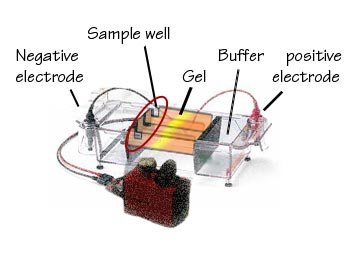Archival Notice
This is an archive page that is no longer being updated. It may contain outdated information and links may no longer function as originally intended.
Home | Glossary | Resources | Help | Contact Us | Course Map
Electrophoresis is a process for separating charged molecules based on their movement through a medium under the influence of an applied electric field. This module will introduce some of the early adaptations of electrophoresis in human identification laboratories. The next module deals with the technology used today.
In 1807, Russian scientist F. F. Reuss observed the migration of particles in an electrical field establishing the foundation for the work of the Swedish chemist Arne Wilhelm Tiselius. In 1930, Tiselius introduced a method for separating proteins in suspension using electric currents, which was termed electrophoresis. He was awarded the 1948 Nobel Prize in chemistry for this work.01, 02, 03 Today, electrophoresis has many applications for separation of the components of mixtures and is the method of choice for amplified DNA product separations.
Additional Online Courses
- What Every First Responding Officer Should Know About DNA Evidence
- Collecting DNA Evidence at Property Crime Scenes
- DNA – A Prosecutor’s Practice Notebook
- Crime Scene and DNA Basics
- Laboratory Safety Programs
- DNA Amplification
- Population Genetics and Statistics
- Non-STR DNA Markers: SNPs, Y-STRs, LCN and mtDNA
- Firearms Examiner Training
- Forensic DNA Education for Law Enforcement Decisionmakers
- What Every Investigator and Evidence Technician Should Know About DNA Evidence
- Principles of Forensic DNA for Officers of the Court
- Law 101: Legal Guide for the Forensic Expert
- Laboratory Orientation and Testing of Body Fluids and Tissues
- DNA Extraction and Quantitation
- STR Data Analysis and Interpretation
- Communication Skills, Report Writing, and Courtroom Testimony
- Español for Law Enforcement
- Amplified DNA Product Separation for Forensic Analysts


